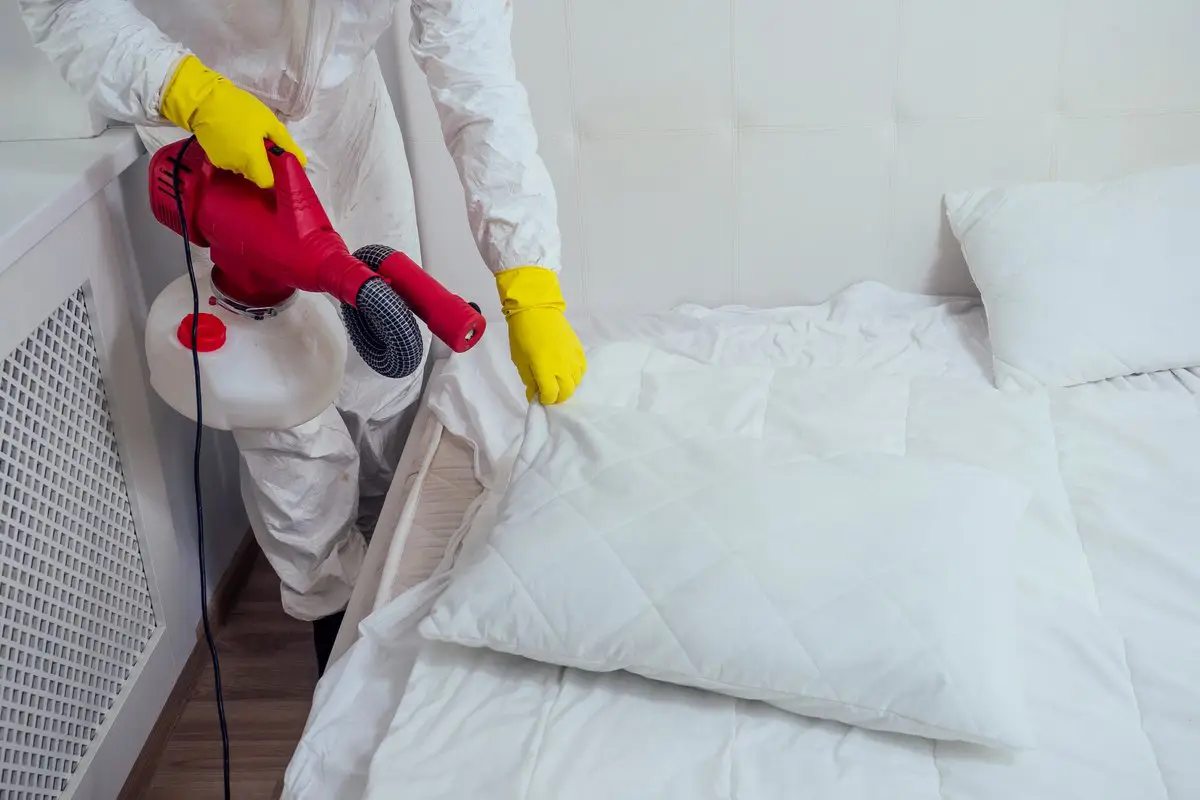Bed bugs are small, reddish-brown insects that feed on the blood of humans and animals. They are a common problem in households, hotels, and other places where people sleep or spend extended periods of time. Bed bugs can be difficult to eradicate once they have infested a space, but there are several effective treatments that can help eliminate these pests.
Identification and Inspection
Before any treatment can be effective, it is important to identify the presence of bed bugs and inspect the infested area thoroughly. Look for the bugs themselves, which are about the size of an apple seed, as well as small, reddish-brown fecal spots on bedding or furniture. Check along the seams of mattresses and box springs, behind headboards and picture frames, and in any other cracks or crevices where bed bugs may be hiding.
Once bed bugs have been identified, it is important to take immediate action to eliminate the infestation. Here are some of the most effective bed bug treatments:
Heat Treatment
Heat treatment is one of the most effective ways to kill bed bugs. The process involves raising the temperature of the infested area to a level that is lethal to bed bugs, typically between 120 and 135 degrees Fahrenheit. This can be achieved using specialized heaters or steamers, which are placed in the infested room and turned on for several hours.
Heat treatment is effective because it kills bed bugs in all life stages, including eggs, which can be difficult to eliminate with other treatments. It is also non-toxic and does not leave any residue, making it a safe option for homes and businesses.
Chemical Treatments
Chemical treatments are another effective way to kill bed bugs. These treatments typically involve applying insecticides to infested areas, such as mattresses, furniture, and baseboards. There are several types of insecticides that can be used for bed bug control, including pyrethroids, neonicotinoids, and insect growth regulators.
It is important to note that bed bugs can develop resistance to some insecticides, so it may be necessary to use a combination of treatments or rotate between different types of insecticides to ensure effectiveness. Additionally, it is important to follow all safety instructions and guidelines when using chemical treatments, as they can be toxic to humans and pets.
Vacuuming and Steam Cleaning
Vacuuming and steam cleaning are effective ways to eliminate bed bugs from furniture, carpets, and other surfaces. Vacuuming can help remove bed bugs and their eggs from carpets, mattresses, and other areas where they may be hiding. Steam cleaning, on the other hand, can help kill bed bugs in all life stages, including eggs, by exposing them to high temperatures.
It is important to use a vacuum with a HEPA filter to ensure that bed bugs and their eggs are not released back into the air. Additionally, steam cleaning should be done carefully to avoid damage to furniture and other surfaces.
Mattress Encasements
Mattress encasements are special covers that are designed to prevent bed bugs from infesting mattresses and box springs. These covers are made of a material that is impenetrable to bed bugs and other pests, and they are sealed tightly around the mattress or box spring.
While mattress encasements cannot eliminate an existing bed bug infestation, they can help prevent new infestations from occurring by trapping bed bugs inside the cover and preventing them from accessing the mattress or box spring. This can be an effective preventative measure for homes and hotels that are at risk of bed bug infestations.
Professional Pest Control Services
In severe cases, it may be necessary to hire a professional pest control company to eliminate a bed bug infestation. Professional pest control services can provide a range of treatments, including heat treatment, chemical treatments, and vacuuming and steam cleaning. They can also provide expert advice on preventing future infestations and maintaining a bed bug-free environment.
When choosing a pest control company, it is important to choose a reputable and experienced company that specializes in bed bug control. Look for companies that are licensed and insured, and that have a track record of success in eliminating bed bug infestations.
Preventative Measures
While there are effective treatments for eliminating bed bugs, it is always better to prevent an infestation in the first place. Here are some preventative measures that can help reduce the risk of bed bug infestations:
- Inspect secondhand furniture and clothing before bringing them into the home.
- Seal cracks and crevices in walls, floors, and furniture to prevent bed bugs from hiding and breeding.
- Avoid placing luggage or clothing on hotel beds or floors, and inspect hotel rooms for signs of bed bugs before unpacking.
- Regularly wash and dry bedding, clothing, and other textiles on high heat to kill bed bugs and their eggs.
- Consider using bed bug interceptors, which are devices that can be placed under the legs of beds and other furniture to trap bed bugs and prevent them from climbing onto the furniture.
Conclusion
Bed bugs are a common problem that can be difficult to eliminate, but there are several effective treatments available. Heat treatment, chemical treatments, vacuuming and steam cleaning, mattress encasements, and professional pest control services are all effective ways to eliminate bed bugs. To prevent future infestations, it is important to take preventative measures such as inspecting secondhand furniture, sealing cracks and crevices, and regularly washing and drying bedding and clothing on high heat. With the right combination of treatments and preventative measures, it is possible to eliminate bed bugs and maintain a bed bug-free environment.

